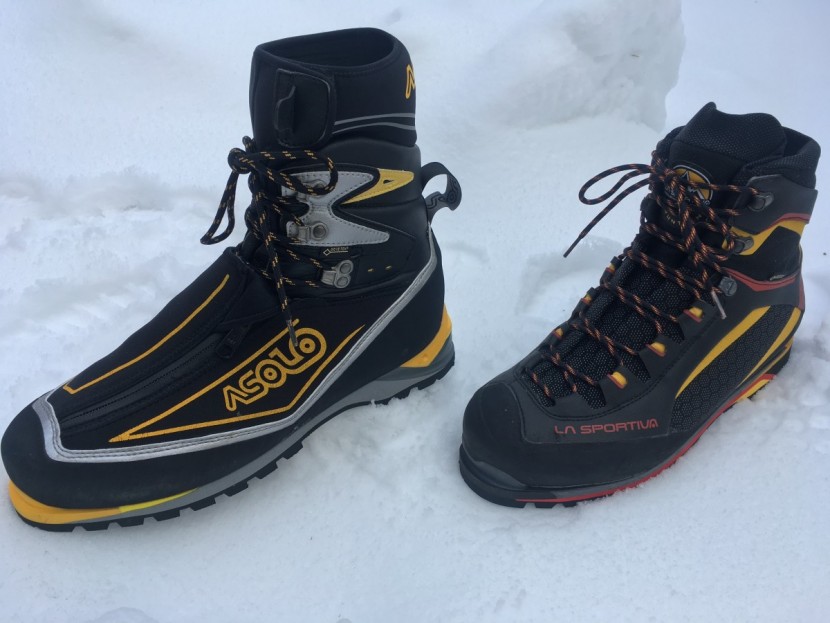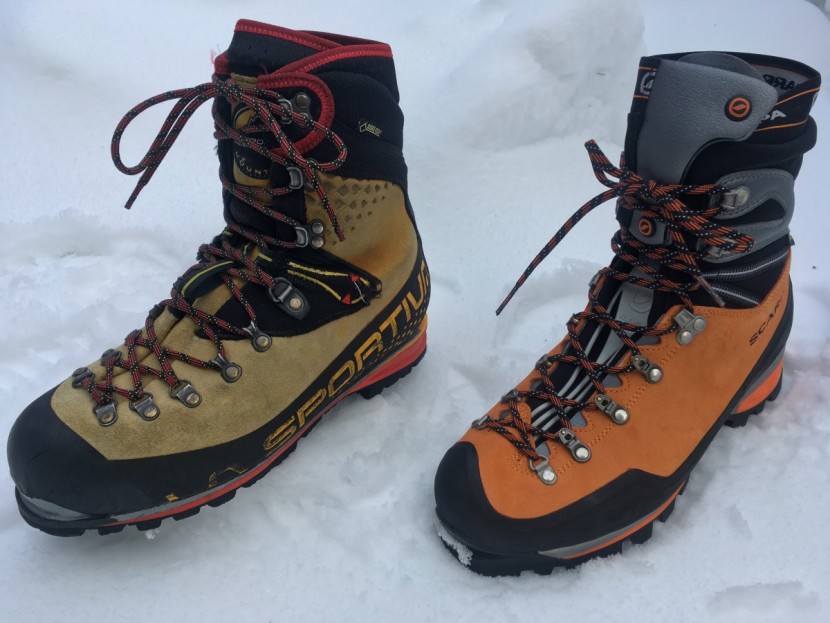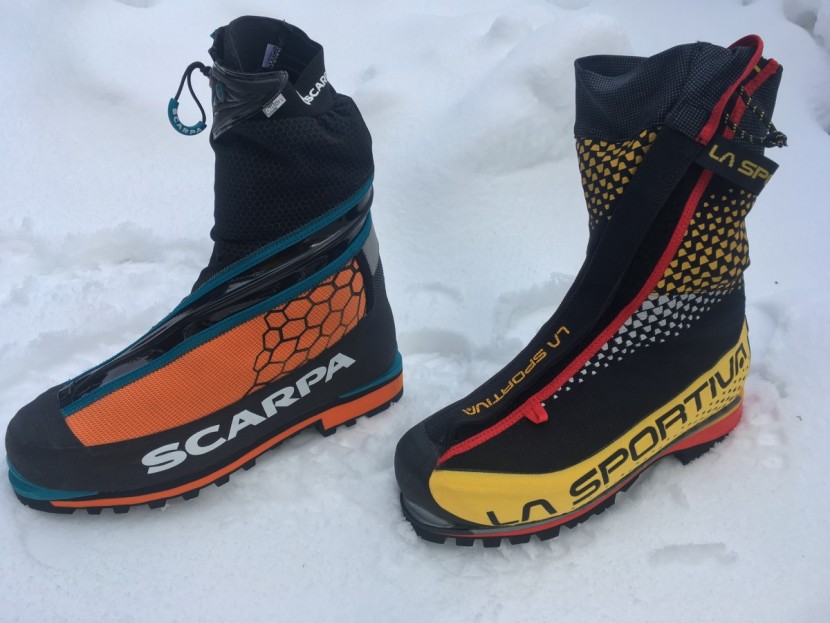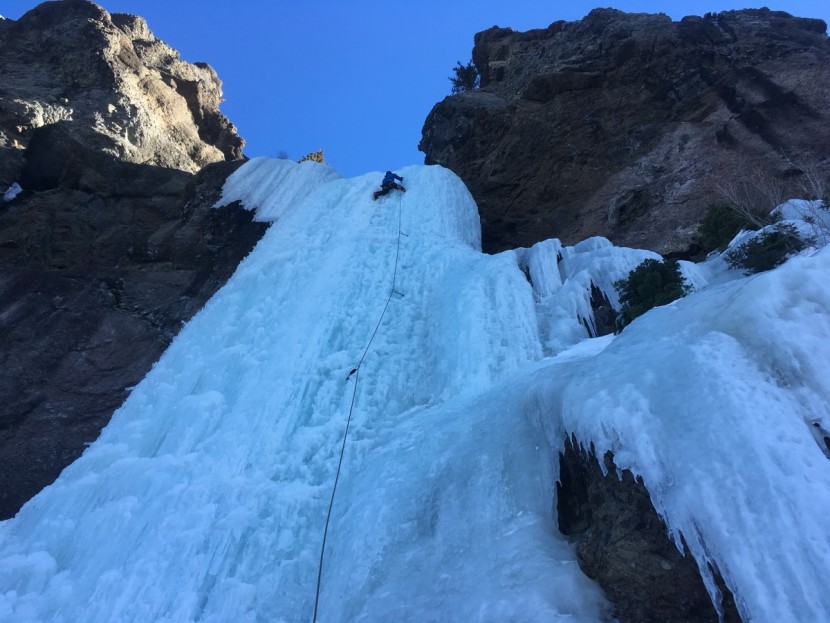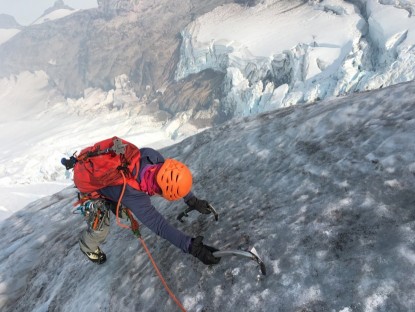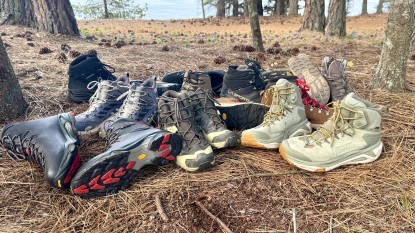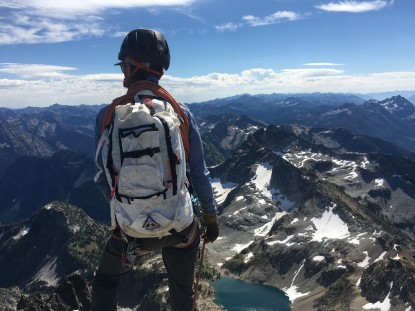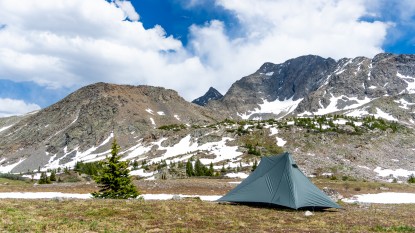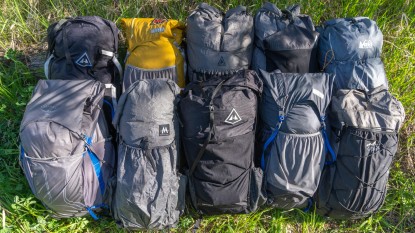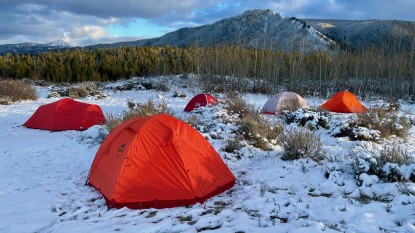Mountaineering boots are possibly the single most important piece of gear you will bring into the mountains. Boots not only connect your feet to the terrain but keep you protected from the elements. Today's mountaineers have an exciting yet confusing array of options to pick from. Boots vary significantly in weight, warmth, support, and function. This article will help guide you towards a boot that will allow you to send with a minimal amount of suffering and hopefully let you keep all of your toes.
Fit
When considering footwear you must consider that our test feet are not your feet. Even though we may highly recommend a boot for its features if the boot doesn't fit your foot well it simply isn't the right boot for you.
Value
Mountaineering is an expensive sport no matter which way you spin it, with models running anywhere from $400 to $750 (or more). We've ranked each of the eight boots in order based on their performance and specialty uses. While some mountaineers or ice climbers might seek out the best of the best no matter the price tag, we also realize that others are willing to sacrifice some aspect of performance in exchange for a more affordable cost. We've awarded the La Sportiva Nepal Cube GTX our Best Bang for the Buck and it rings in at $575 list price. While others in our review offer cheaper price points, the performance is not as high; however, if you're on a tight budget, we recommend taking a look at the La Sportiva Trango Ice Cube, Scarpa Rebel Pro GTX, Scarpa Mont Blanc Pro GTX, or the Lowa Mountain Expert GTX Evo .
Style of Boot
When considering which mountaineering boot to buy, you first need to consider what category of boot will help you achieve your goals in the mountains. In picking a category of boot you should consider what types of objectives you have in mind. Some questions to ask yourself: Will I be climbing vertical ice, neve, snow or rock? Will I be hiking long distances to get to the climb? How cold is it going to get? Will I be spending nights in the mountains or just day tripping?
We have broken the boots we reviewed into four categories:
Lightweight BootsLightweight boots have an upper boot that is all one piece. The upper may be composed of many layers sandwiched together, but they do not separate in any way. This is a relatively new category of boot. They typically have little insulation and more flexible uppers than heavier boots but retain a stiff sole. This lighter construction makes for a more precise feel on technical ground. They work well in warm to cool conditions and some climbers will carefully take them out on colder days. Single boots are the lightest category and are suitable for climbing hard ice, rock, and mixed terrain. The La Sportiva Trango Tower Extreme GTX and Asolo Eiger GV are lightweight boots
Single Boots
Like a lightweight boot, a traditional single boot does not have a removable inner boot. Historically made mostly of leather, newer synthetic materials are increasingly being incorporated into the upper. These are typically warmer and have more supportive and taller uppers than a lightweight boot, so they perform better on steeper ice. They are not quite as nimble as lightweight boots. Single boots are a good option for climbing anywhere in the lower 48 year-round and many objectives in Canada and Europe. The La Sportiva Nepal Cube and Scarpa Mont Blanc Pro are single boots.
Super-Gaiter Boots
Super-gaiter boots are an exciting new take on an old concept. Super-gaiter boots are essentially a hybrid between single and double boots. They consist of a non-removable inner boot covered by a permanently attached outer gaiter. The gaiter adds warmth and weatherproofing. Super-gaiter boots are suitable for climbing in colder or wetter conditions than single boots. If you are planning on climbing early season Patagonia ice or Canadian multi-pitch ice super-gaiter boots are a good choice. This style has become the weapon of choice for mountain guides working in the winter as well as elite climbers in the Alaska Range since they offer more protection than a single boot with an only a small weight penalty.
One downside to super-gaiter models is that they can be hard to dry. Since the gaiter cannot be removed, it makes for less drying airflow around the inner boot. This may not be a problem if you climb once a week but might become an issue if you are climbing many days in a row. The Scarpa Phantom Tech and La Sportiva G5 are super-gaiter boots.
Double BootsDouble boots are composed of an inner and outer boot which separate. The removable inner boot goes into a sleeping bag at night to dry out, so they're the best choice for multi-night adventures in the winter. Traditionally double boots have been warm enough to wear on the highest peaks of the planet, with the cost of added weight and bulk and compromised climbing performance. The Arc'Teryx Acrux AR is the only double boot on the market with climbing performance to match that of a super-gaiter boot. This is because it doesn't have all the insulation for slogging up some snowy Himalayan Peak. It does still have a removable liner, making it an excellent choice for winter overnight trips throughout the lower 48.
How to Size Mountaineering Boots
The size of a mountaineering boot will have as much to do with warmth and performance as features of the boot. Many climbers feel that they must fit their rock shoes as tight as possible in order get maximum performance out of their feet. While this is debatable in sport climbing shoes, it is certainly not the case when it comes to mountaineering boots. If they fit too tight, you will suffer from two problems for sure: the first is that your blood flow and toe movement is restricted, so your feet will get cold. The second problem with fitting your boots too tight is that your toes will bang against the end of the boot when kicking in your front points or when walking downhill. We recommend sizing big enough to be able to wiggle all of your toes about one third as much as you can without shoes on.
Whenever possible we recommend trying on mountaineering boots before buying them. Our testers prefer a single mid-weight wool sock for all styles of boots over any combination of two socks. Try on boots with whatever sock set up you will climb in. Since your feet swell in the mountains, attempt to try on late in the day when your feet are naturally slightly larger. Lace them up tight and try to kick into something with as much force as it takes to kick front points into ice. If your toes bump the end of the boot when doing this, then we recommend you upsize until this stops. Second, try to stand on a small edge under the toe welt of the boot. This will simulate standing on front points and you should feel if your heels lift up in the back of the boot. A small amount of heel lift is okay but too much and your climbing will suffer. The key is to find a balance between toe wiggle and heel lift. We have found that different brands have distinctly different heel cups, so you may need to switch brands to find the right combo of length vs heel hold down.
None of the boots in this review are cheap, so we also recommend buying boots from online retailers that have generous return policies. If you can swing it, order two sizes and return the ones that don't fit. We won't tell. As a very general rule, we recommend buying your true street shoe size or possibly one-half size bigger.
Conclusion
The boots in this review differ in weight, support, and function making it difficult to sort through the options. When choosing the best pair of mountaineering boots to buy, you first need to take into account what type of boot will best fit your mountaineering goals. We hope that the tests and observations written about in this review has helped you to sort through the different features to find the perfect pair for your feet.



